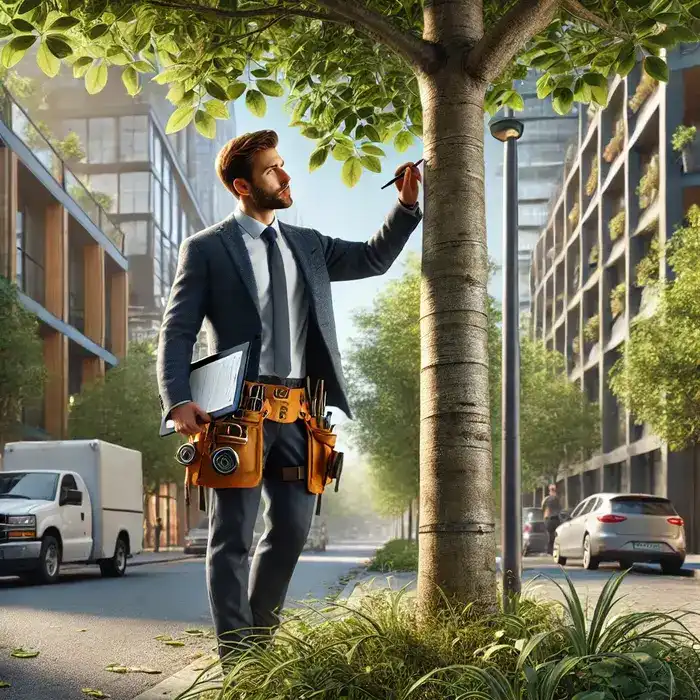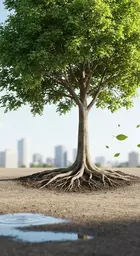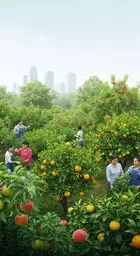Physiological Indicators
Monitoring aspects such as leaf color and branch structure.
Subscribe to get expert tips and the latest insights on tree care and urban greening directly to your inbox.
Posted on: 2025-03-19
By: Keira Vallejo
Urban trees are not just aesthetic enhancements; they are vital components of our ecosystem that demand careful attention. As cities grow, the health of these green giants becomes increasingly crucial for our environment and well-being.
Understanding the holistic approach to tree health assessments helps maintain vibrant urban forests. Below are essential techniques and components for effective management.
Monitoring aspects such as leaf color and branch structure.
Considering soil quality and microclimates for optimal growth.
Identifying pests and diseases that affect tree health.
Recognizing diversity in urban ecosystems for health.
Early detection of hazards and optimal growth support.
Fostering stewardship and connection to nature.
As an urban forestry enthusiast, I can tell you that tree health assessments are crucial for the well-being of our city landscapes. Trees are more than just beautiful decor in our urban spaces; they play a vital role in our ecosystems. Assessing their health helps us understand how to support these green giants, ensuring they thrive in challenging urban conditions!
In cities, trees contribute significantly to air quality, provide shade, and even reduce noise pollution. They create habitats for wildlife and enhance the overall aesthetic of our neighborhoods. By regularly evaluating tree health, we can determine their needs and take proactive steps to keep them healthy and safe.
Urban trees serve as the lungs of our cities. They absorb carbon dioxide, release oxygen, and filter pollutants from the air. This not only improves our health but also combats climate change. Moreover, trees help regulate temperatures, making our urban environments more pleasant to live in. Understanding the mental well-being benefits of urban trees further emphasizes their importance.
Here's a quick rundown of some key roles urban trees play in our ecosystems:
Conducting regular tree health assessments brings numerous benefits to urban communities. These evaluations help detect issues early, allowing us to address them before they escalate into serious problems. This proactive approach can save money and resources while ensuring our trees remain a valuable part of the ecosystem.
Some additional benefits include:
At Urban Canopy Blog, we aim to empower communities with the knowledge needed for effective tree care. By emphasizing the significance of tree health assessments, we can work together to enhance our urban environments and promote greener, healthier cities!
Here are some frequently asked questions about tree health assessments:
Tree health assessments are crucial for maintaining healthy urban ecosystems. They help identify potential hazards, optimize tree growth, and ensure the long-term survival of city trees.
Key indicators include physiological factors (e.g., leaf color, branch structure), environmental conditions (e.g., soil quality, microclimate), and biological aspects (e.g., presence of pests or diseases).
Regular assessments enhance safety by identifying hazardous conditions, promote optimal tree growth, and engage the community in tree care, fostering a sense of stewardship and connection to nature.
Urban trees contribute significantly to air quality by absorbing carbon dioxide and releasing oxygen. They also help regulate temperatures, reduce noise pollution, create habitats for wildlife, and enhance the aesthetic appeal of neighborhoods.
Community members can participate by attending workshops, joining volunteer networks for tree care, and collaborating with local arborists and environmental organizations.
A holistic approach involves considering various physiological, environmental, and biological factors affecting tree health. This comprehensive evaluation ensures more effective management strategies and a healthier urban forest.
Did you know? Regular tree health assessments can significantly increase the lifespan of urban trees. A study found that proactive management can extend tree life by up to 20 years, reducing the need for costly removals and replacements. Investing time in assessments today can lead to a healthier, more resilient urban forest tomorrow!
As we wrap up our discussion on urban tree health assessments, it's clear that a holistic approach is crucial for maintaining the vitality of our city trees. By considering various physiological, environmental, and biological factors, we can better understand the health of our urban forests. Remember, regular assessments not only inform us of individual tree conditions but also help foster a healthier ecosystem overall. This is something I deeply believe in at Urban Canopy Blog, as it aligns with our mission to cultivate vibrant urban spaces.
To sum it up, here are the essential techniques and aspects we've explored:
Ultimately, these assessments play a significant role in keeping our urban landscapes not just beautiful but also resilient to the challenges they face. Together, we can ensure that our city trees are thriving and contributing positively to our communities.
Throughout this article, we've highlighted the importance of a comprehensive evaluation of tree health. A holistic approach means considering several key components: physiological indicators, environmental impacts, and the biological aspects affecting tree wellness. This multifaceted understanding can lead to more effective management strategies and a healthier urban forest.
Here’s a quick recap of essential techniques for assessing tree health:
These techniques are vital for ensuring that our trees receive the attention they need. By sharing this knowledge, I hope to inspire others to take action in their neighborhoods, contributing to a greener, healthier city. Considering the benefits of professional tree care is an important part of this.
Now that we understand the importance of urban tree health assessments, it’s time to take action! Establishing a local tree health assessment program can make a significant difference in our urban ecosystems. At Urban Canopy Blog, we believe that community involvement is key to creating lasting impacts on our green spaces.
Here are some steps to consider when starting your own program:
By taking these steps, you can foster a sense of ownership and responsibility among community members. Together, we can enhance the health and beauty of our urban landscapes, ensuring that every tree is given the opportunity to thrive!
Collaboration is essential in promoting effective tree health assessments. By bringing together arborists, community members, and local authorities, we can create a cohesive strategy for tree care. This teamwork not only strengthens our urban forests but also builds relationships among residents. For example, seasonal changes impact tree health; understanding seasonal urban tree care is key to effective collaboration.
Consider these collaborative actions:
Together, we can make a difference! Your efforts, combined with the expertise of professionals, will lead to a thriving urban canopy that benefits everyone in the community. Let’s get started on building a greener, healthier city for all! The trees we select also play a crucial role, so remember to consider summer tree care tips.
Here is a quick recap of the important points discussed in the article:

 As urban environments evolve, the resilience of trees becomes increasingly critical in combating cli
As urban environments evolve, the resilience of trees becomes increasingly critical in combating cli
 What if the key to combating urban food insecurity lies in our own backyards? Urban fruit trees not
What if the key to combating urban food insecurity lies in our own backyards? Urban fruit trees not
 Urban environments are often described as concrete jungles, but they can also be vibrant ecosystems
Urban environments are often described as concrete jungles, but they can also be vibrant ecosystems